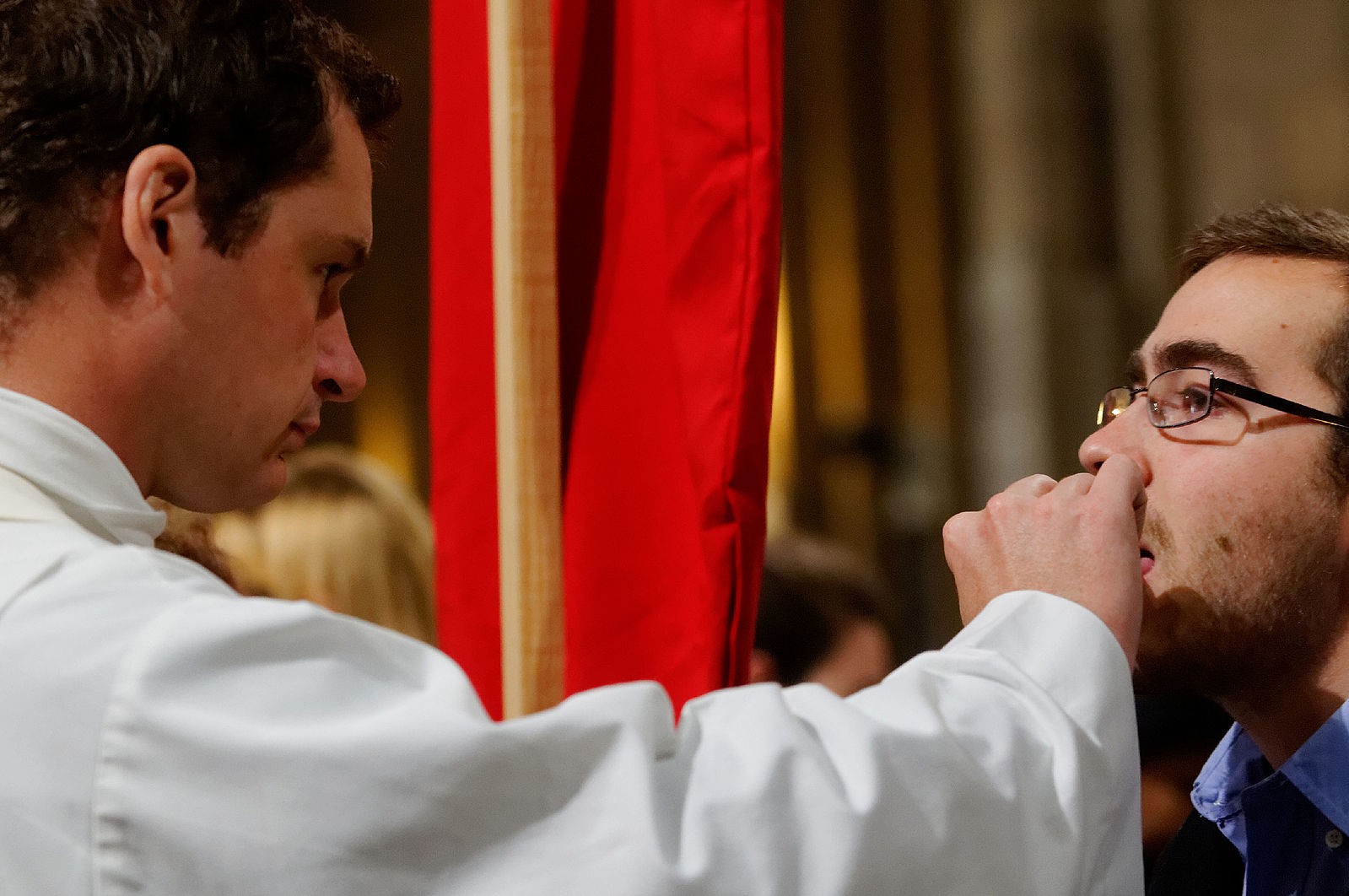Answered by Legionary of Christ Father Edward McNamara, professor of liturgy and dean of theology at the Regina Apostolorum university.
Q: In your column dated June 21, 2016, you spoke at length regarding the frequency of the reception of Communion and various practical reasons why the frequency fluctuated throughout the centuries. In your introduction you mentioned that you would necessarily have to limited yourself to a narrow answer, which is quite reasonable, and thus you could not speak to things like the posture of the faithful during reception. However, I think that question in itself would be very interesting to investigate from the perspective of historical development. Could you perhaps give us a brief history of the posture and practice of the faithful during the Rite of Communion? — M.S., Pittsburgh, Pennsylvania
A: The posture for receiving Communion has varied over time and still varies among the several rites of the Church. It also depends on the frequency of Communion, the distribution of one or both species, and the manner of distribution of both species.
Regarding the place for the faithful’s reception of Communion, the early Latin tradition favored approaching the altar and, indeed, most later solutions maintained some relationship with the altar even though it was physically in a different place. In some areas, where there were many communicants the clergy would come to the places of the faithful.
When the sanctuary was separated from the main body of the church by gates, these were left open at the time of Communion so that the faithful could enter and receive at a side altar. This practice was curtailed from the early ninth century on. After this, the sanctuary began to be surrounded by a high wall and the faithful would approach a transept altar erected outside the screen. In some places such as North Africa people would approach a rail. This rail was higher than later altar rails and would reach chest level. Therefore, until this time the custom was to receive standing. This is still the practice of most Eastern Churches for whom knelling is not a common liturgical posture.
From the ninth century on, the practice of receiving only the host and directly on the tongue became the norm. Likewise, between the 11th and 16th centuries, the custom of receiving the Lord’s Body while kneeling gradually gained ascendancy in the Latin rite.
Around the 13th century it became customary in some places to spread a cloth, held by two ministers, for kneeling communicants. Later on, in the 16th century it was common to place the cloth on a table or bench located between the nave and the sanctuary. Since this proved quite convenient for administering Communion they gradually evolved into the fixed wooden, metal or stone altar rails which were practically universal from the 17th century until recently.
Although the Second Vatican Council did not call for the removal of altar rails, in fact, they have been removed in many places. The practice of receiving Communion standing rather than kneeling and on the hand rather than on the tongue is also far more common. The more frequent distribution of Communion under both species, taking the Precious Blood directly from the chalice, has also influenced this change of posture.
The liturgical norms still allow for kneeling, although allowing leeway to the bishops’ conference to emit other norms but not to disallow kneeling.
Thus, the General Instruction of the Roman Missal, No. 160, has a slightly different text in the United States and in other English-speaking countries.
In England and Wales it says:
“The priest then takes the paten or ciborium and goes to the communicants, who, as a rule, approach in a procession. The faithful are not permitted to take the consecrated Bread or the sacred chalice by themselves and, still less, to hand them from one to another. The faithfulcommunicate either kneeling or standing, as determined by the Conference of Bishops. When they communicate standing, however, it is recommended that they make an appropriate sign of reverence, as determined in the same norms, before receiving the Sacrament.”
In the United States:
“… The norm for reception of Holy Communion in the dioceses of the United States is standing. Communicants should not be denied Holy Communion because they kneel. Rather, such instances should be addressed pastorally, by providing the faithful with proper catechesis on the reasons for this norm.
“When receiving Holy Communion, the communicant bows his or her head before the Sacrament as a gesture of reverence and receives the Body of the Lord from the minister. The consecrated host may be received either on the tongue or in the hand, at the discretion of each communicant. When Holy Communion is received under both kinds, the sign of reverence is also made before receiving the Precious Blood.”
* * *
Readers may send questions to zenit.liturgy@gmail.com. Please put the word «Liturgy» in the subject field. The text should include your initials, your city and your state, province or country. Father McNamara can only answer a small selection of the great number of questions that arrive.

Postures at Communion
Practices Have Shifted Over the Centuries


